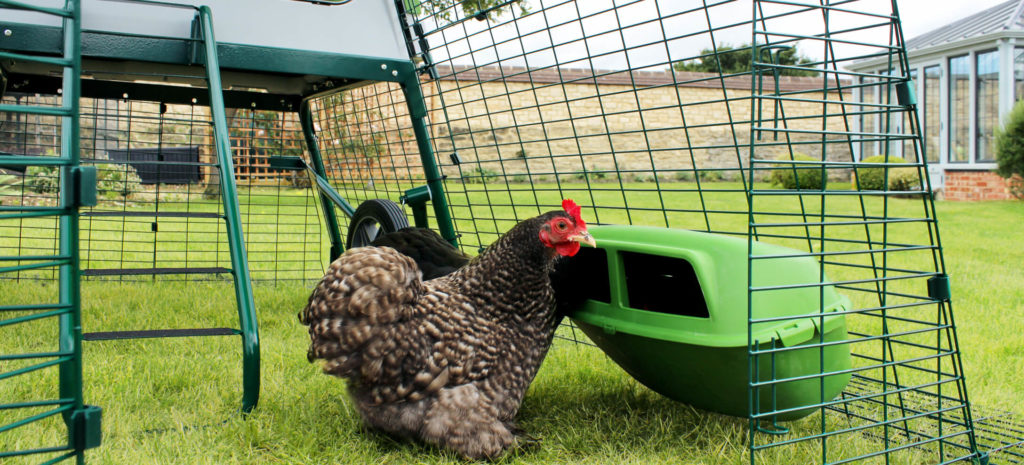What You Need to Know About Avian Flu in 2020/2021

Important update on 19th March 2021 from gov.uk:
“The risk of avian influenza to both wild and kept birds has reduced to ‘medium’. The Avian Influenza Prevention Zone (AIPZ) requiring enhanced biosecurity will remain in force but Wednesday 31 March 2021 will be the last day poultry and other captive birds will need to be housed (housing restrictions end 23:59 31 March 2021). Bird gatherings are still prohibited. High standards of biosecurity remain essential as infection may still be present in the environment.”
Important update on 3 December 2020 from gov.uk:
“The Chief Veterinary Officers for England, Scotland and Wales have agreed to bring in new measures to help protect poultry and captive birds. The new housing measures announced on the 3 December 2020, which will come into force on the 14 December 2020, mean that it will be a legal requirement for all bird keepers to keep their birds indoors and to follow strict biosecurity measures in order to limit the spread of and eradicate the disease.”
Avian Flu is an issue that affects all chicken keepers. Efforts to contain the virus never result in its eradication, and the fact that it is not currently in the headlines doesn’t mean it’s disappeared. Many countries are enduring the avian flu version of lockdown in certain regions this year, and people are being told to take appropriate measures.
There have been local outbreaks in the UK, Germany, Denmark and the Netherlands in the second half of 2020. The current avian flu strain in Europe is a low pathogenic avian influenza, meaning that it is highly unlikely to spread from its bird hosts to humans. The ghost of a bird flu pandemic cannot be ignored, though.
The outbreak is thought to have originated in western Russia and Kazakhstan, following the same pattern as the avian flu outbreaks in the summers of 2005 and 2016. In both previous cases, epidemics soon spread to northern and eastern Europe.
This article describes the impact of pathogenic avian influenza, how it spreads, and what chicken keepers can do to prevent it, based on government guidelines and other practical measures.
What is avian flu?
As its name suggest, the avian flu virus is a form of influenza (flu) biologically adapted to bird hosts. Bird flu is not a virus specific to chickens and poultry, and in theory any bird, wild or domestic, can be infected. The reservoir of avian influenza is, indeed, flocking wild birds such as geese and gulls.
Symptoms of avian flu in chickens
Chickens with avian influenza will display various symptoms. They may be less active than usual, and will lose their appetite and show signs of nervousness. Their egg production will drop, and eventually their combs and wattles will look swollen, with a blue discoloration. Other avian influenza symptoms in poultry include coughs, sneezes and diarrhoea. Unfortunately, many of these bird flu symptoms are associated with other ailments, too, so a vet will need to make the diagnosis.
It can take 14 days for an avian influenza outbreak to spread throughout a flock. Some infected birds may exhibit no signs, even though they are still potential virus carriers. Others may ail and die very quickly.
How to treat avian flu in chickens
You can reduce the risk of avian influenza in your poultry by following the latest guidelines issued by Defra and the government. Vaccination of a flock at risk from the avian influenza virus is the only method of prevention. If avian influenza affects a flock, the flock has to be put down. Links to the latest UK government advice is given at the end of this article.
How to protect your chickens
- Place your birds’ food and water in fully enclosed areas that are protected from wild birds, and remove any spilled feed regularly.
- Keep your equipment clean and tidy and regularly disinfect hard surfaces.
- Clean footwear before and after visiting your birds.
- Ensure clothing that you use when handling your chickens is washed after contact.
- Use run covers to protect your chickens’ enclosure from wild bird droppings.
- Keep moveable coops in the same place – if coops are moving to fresh ground there is more chance of coming into contact with wild bird faeces.
- Keep a close eye on your chickens. If you have any signs of illness, seek advice from a qualified vet.
Areas in the UK affected by avian flu in 2020
The latest cases of avian influenza virus amongst chickens and other poultry occurred in the Melton Mowbray region of Leicestershire in November 2020, with the other affected areas located south of Liverpool and in the Leominster region of Herefordshire. There are 10-kilometre exclusion zones in place at these locations, and there are dozens of other areas observing a 3-kilometre exclusion zone based on the risk from wild birds. The Department for Environment, Food and Rural Affairs (Defra) has an up-to-date interactive avian influenza map showing all the areas affected by restrictions in England, Scotland and Wales. Not surprisingly, areas adjoining the island’s various estuaries, firths and The Wash, are affected, and anyone keeping chickens in these areas needs to be up to date with the latest government advice and regulations.
The UK government recommends registering your hens (and any other poultry), which will ensure that you receive the latest advice regarding the flu. If you keep over 50 hens, registration is a legal requirement, as you are then, by definition, a poultry farmer. Farmers who do not comply with regulations regarding avian flu can be imprisoned for up to three months or face unlimited fines.
Advice from Gov.co.uk
“The risk of HPAI incursion in wild birds in the UK is HIGH. The overall risk of infection of poultry in the UK is MEDIUM; although it should be noted that the risk of introduction to individual premises depends upon the level of biosecurity implemented on farm to prevent direct or indirect contact with wild birds.”
(Official advice about biosecurity can be found here: https://www.gov.uk/guidance/avian-influenza-bird-flu#biosecurity-advice)
“Bird flu is a notifiable animal disease. If you suspect any type of bird flu in poultry or captive birds you must report it immediately by calling the Defra Rural Services Helpline on 03000 200 301. In Wales, contact 0300 303 8268. In Scotland, contact your local Field Services Office. Failure to do so is an offence.
If you find dead wild waterfowl (swans, geese or ducks) or other dead wild birds, such as gulls or birds of prey, you should report them to the Defra helpline (03459 33 55 77 – please select option 7).”
*Advice correct as of 25th November 2020.
No comments yet - Leave a comment
This entry was posted in Chickens on November 26th, 2020 by chloewelch

